Meet the women dealing with landmines and their aftermath
"The work might be hard, but I do it willingly."
April 1, 2024
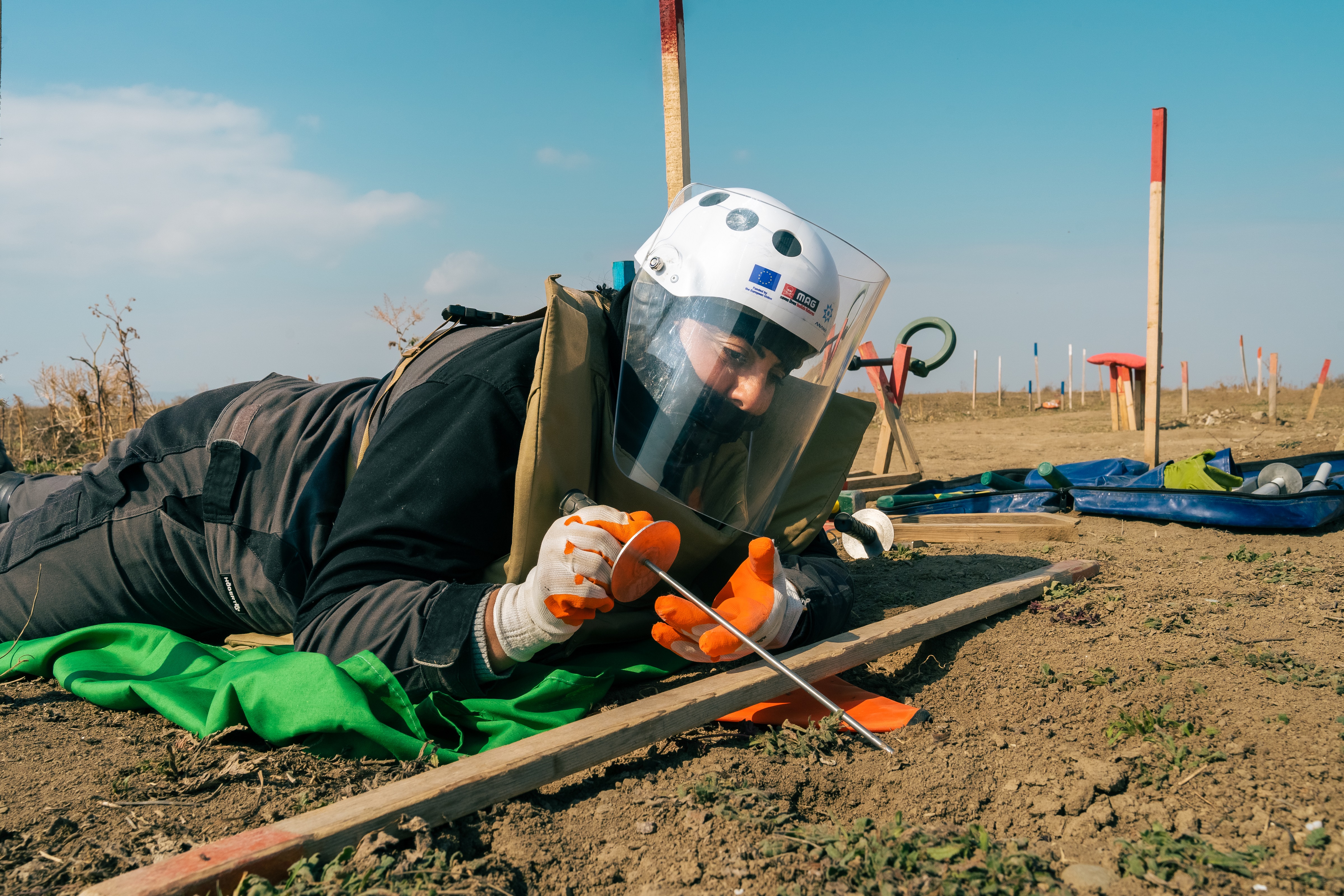
Woman are clearing contaminated land for the first time in Azerbaijan after receiving UNDP training.
There are an estimated 60 million people living with the risk of mines and other explosive ordnance, many in places where conflicts have officially ended years or decades ago, and many in places with ongoing wars.
Women’s involvement in tackling the challenges of explosive ordnance is being recognized as a cornerstone to unlocking the sustainable development benefits of mine action.
Recruiting women key to mine action in Azerbaijan
“While everyone is busy in the mornings, I clean my boots,” says Aytan Ismayilova. She is one of the first women in Azerbaijan who was trained to clear contaminated land.
Her blast-resistant boots are part of the kit which includes body protection, a helmet and a visor. The equipment offers a degree of protection as she bravely goes into hazardous areas to survey and clear them of mines.
Her mother was initially against her becoming a deminer. The family had lost Aytan’s uncle, and a cousin had been injured in an explosion. She was undeterred and joined a UNDP-backed training programme with the Mine Action Agency of the Republic of Azerbaijan (ANAMA).
“When I heard that ANAMA was hiring women deminers, I told my family I wanted to apply. My father supported me, but the others did not agree with it. They thought that I would give up this job. I'm stubborn and love to go all the way,” she says.
She learned the skills and code of conduct to recognize, detect and mark mines and unexploded ordnance. “Thanks to the training, I feel more confident. While receiving the certificate, my mother shared my photo and wrote that she was proud of me,” she says.
Clearing land allows displaced people to return to their farms and homes, to recommence their daily activities and for Azerbaijan to move forward with its development plans. Involving women is seen as a key component. Being able to work and communicate inclusively with communities is essential. Involving women also provides them livelihoods and a say in how mine action is carried out.
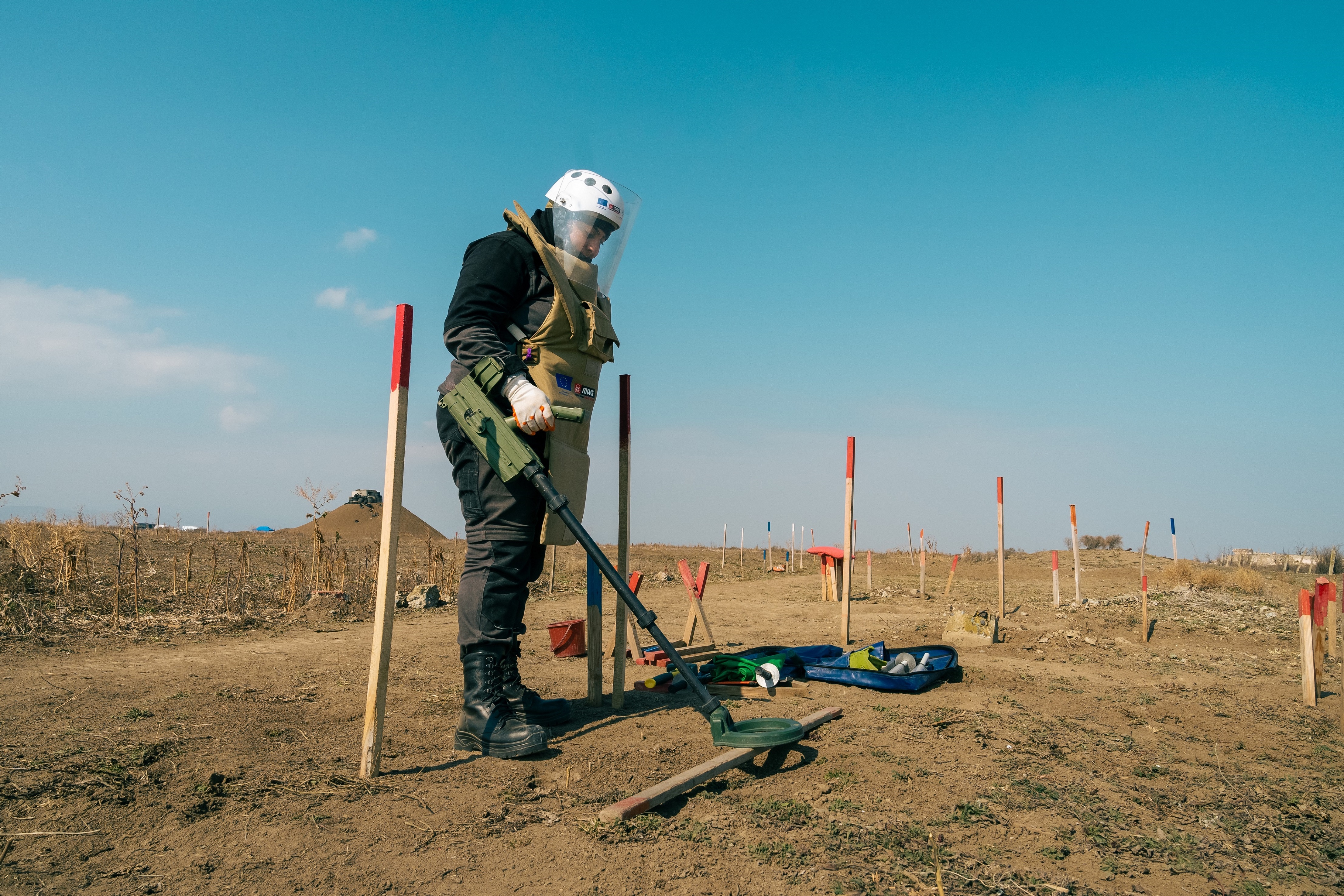
Clearing land allows displaced people to return to their farms and homes, to recommence their daily activities.
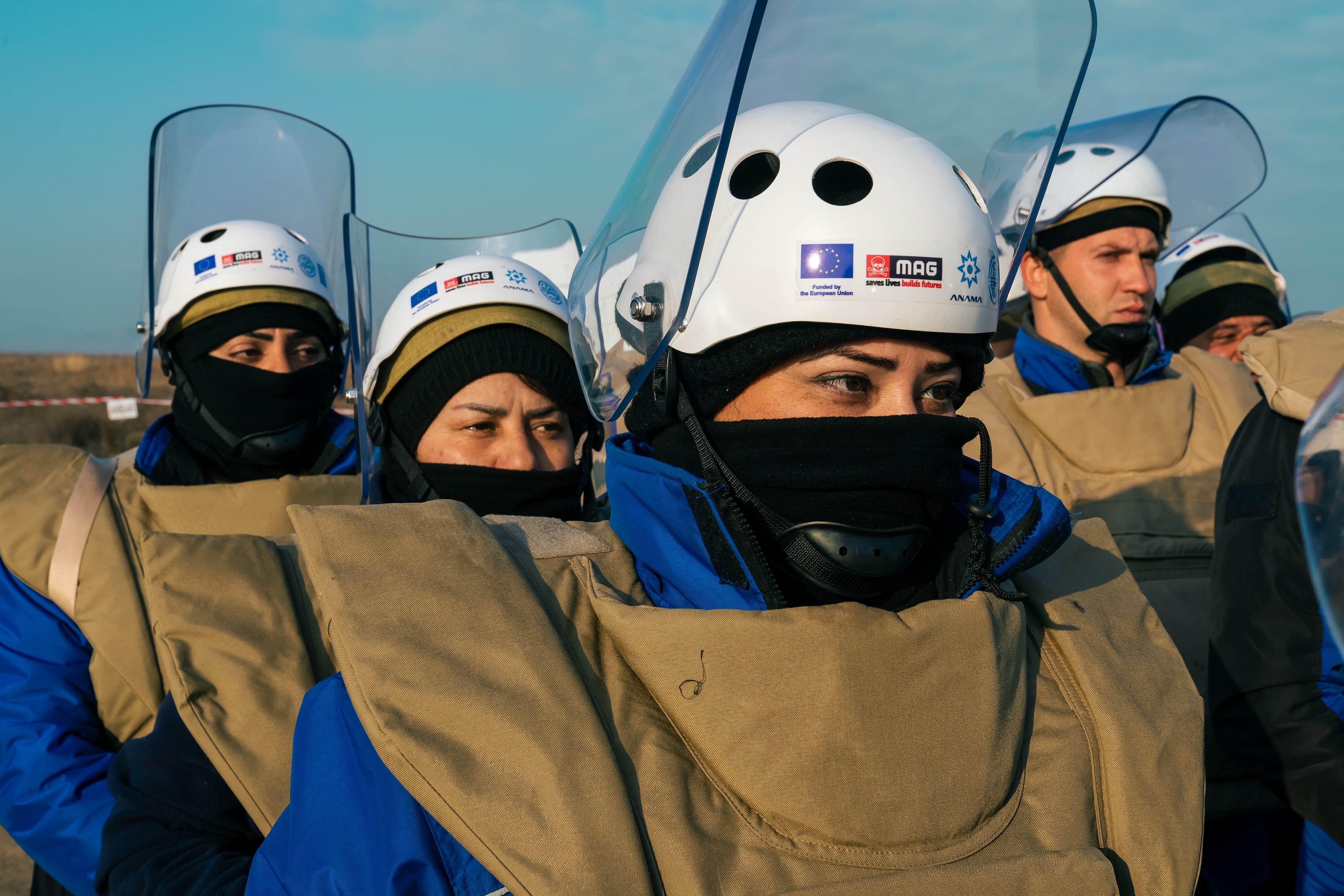
Involving women in mine clearance provides them livelihoods and a say in how mine action is carried out.
In Ukraine, women play leadership roles in making land safe
In Ukraine, women play a leadership role from the boots on the ground to the First Deputy Prime Minister and Minister of Economy, Yulia Svyrydenko, who heads humanitarian demining coordination.
Since the full scale Russian invasion in 2022 there has been an industrial use of landmines in the country along with bombs, artillery shells and other deadly by-products of war. The levels of contamination have not been seen in Europe since World War II.
“My children are my motivation. They live in a country that is currently unsafe due to landmines. My goal is to ensure that every inch of our land is free from these threats,” said Oleksandra Yevdokimova, who leads a demining group for Halo Trust, a non-government organization.
As the lead UN agency on mine action in the country, UNDP works with Government of Ukraine on coordination on demining, clearance, debris removal, public education campaigns and assisting victims. On land release, UNDP supports the government to clear key infrastructure and agricultural land.
Building capacity is key. With the 3,500 demining engineers now in Ukraine, it will take more than 20 years to clear the agricultural land alone. Oleksandra was a logistician with no prior experience before she began working in demining one and half years ago.
“Stepping onto a real minefield after training made me realize my capability to do something. There are moments when my team come across explosive devices, mark and hand them over to the State Emergency Service. I realize: yes, cool, we did it,” she says.
The impact goes far beyond Ukraine. The government estimates that before the war, the land that’s now contaminated provided food for 81 million people, mostly in middle- and lower-income countries. Making Ukraine’s farmland productive again can help struggling families.
To help clearance, UNDP has provided the State Emergency Service with computers and staff to support land release using satellite imagery and artificial intelligence, along with equipping 200 of their teams with personal protective gear, vehicles, demining tools, communication equipment and technical devices. Over 21,000 square kilometres in six regions have now been assessed mine free, reducing costs from US$200 million to US$50 million.
"I think that Ukraine will be able to find innovative approaches to speed up demining processes, and that we’ll be able to replicate that experience for other countries that face the same challenges." -Yulia Svyrydenko, First Deputy Prime Minister and Minister of Economy of Ukraine.
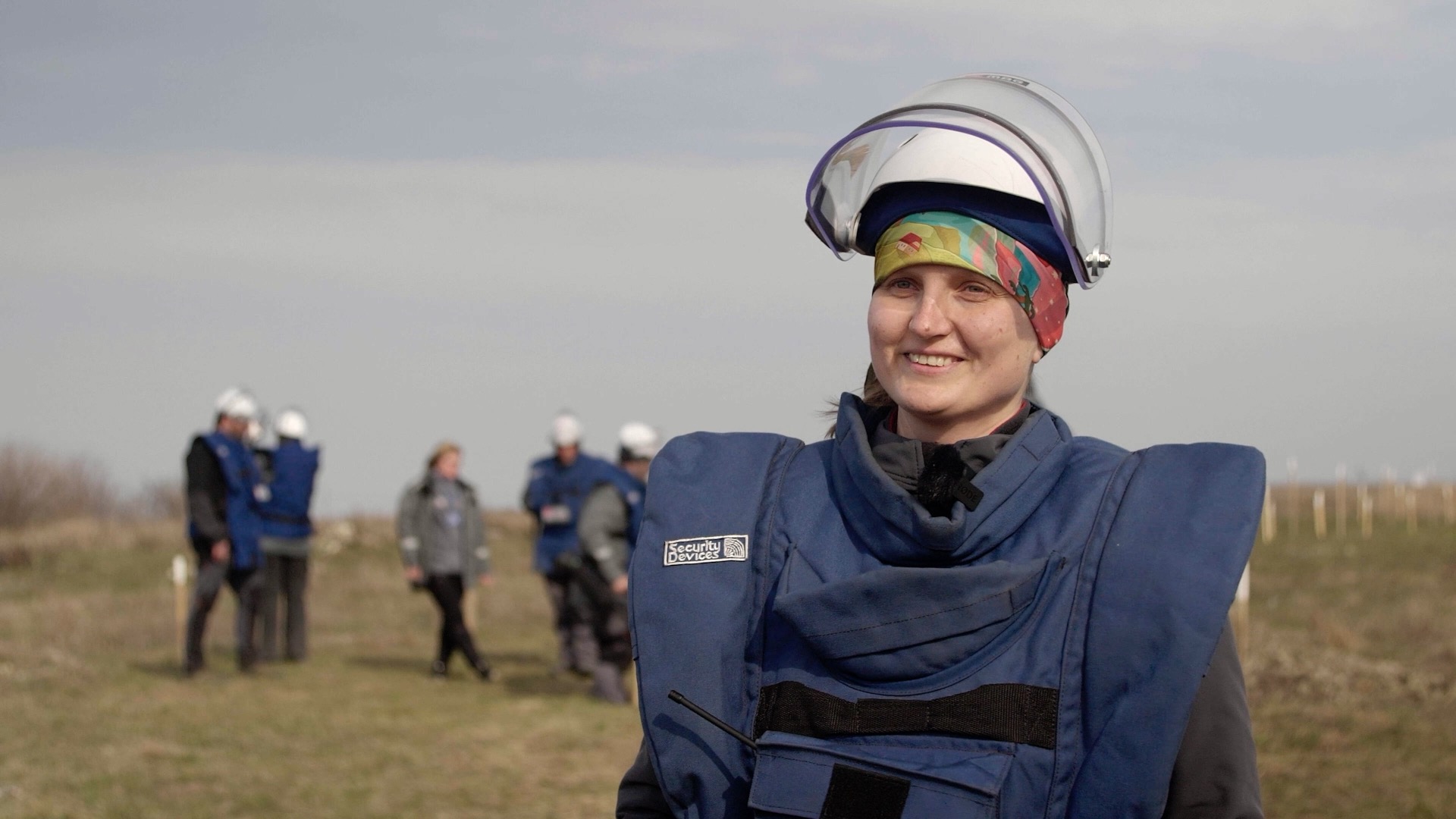
Women such as Oksana Omelchuk are gaining the knowledge and skills to detect and mark mines and unexploded ordnance.
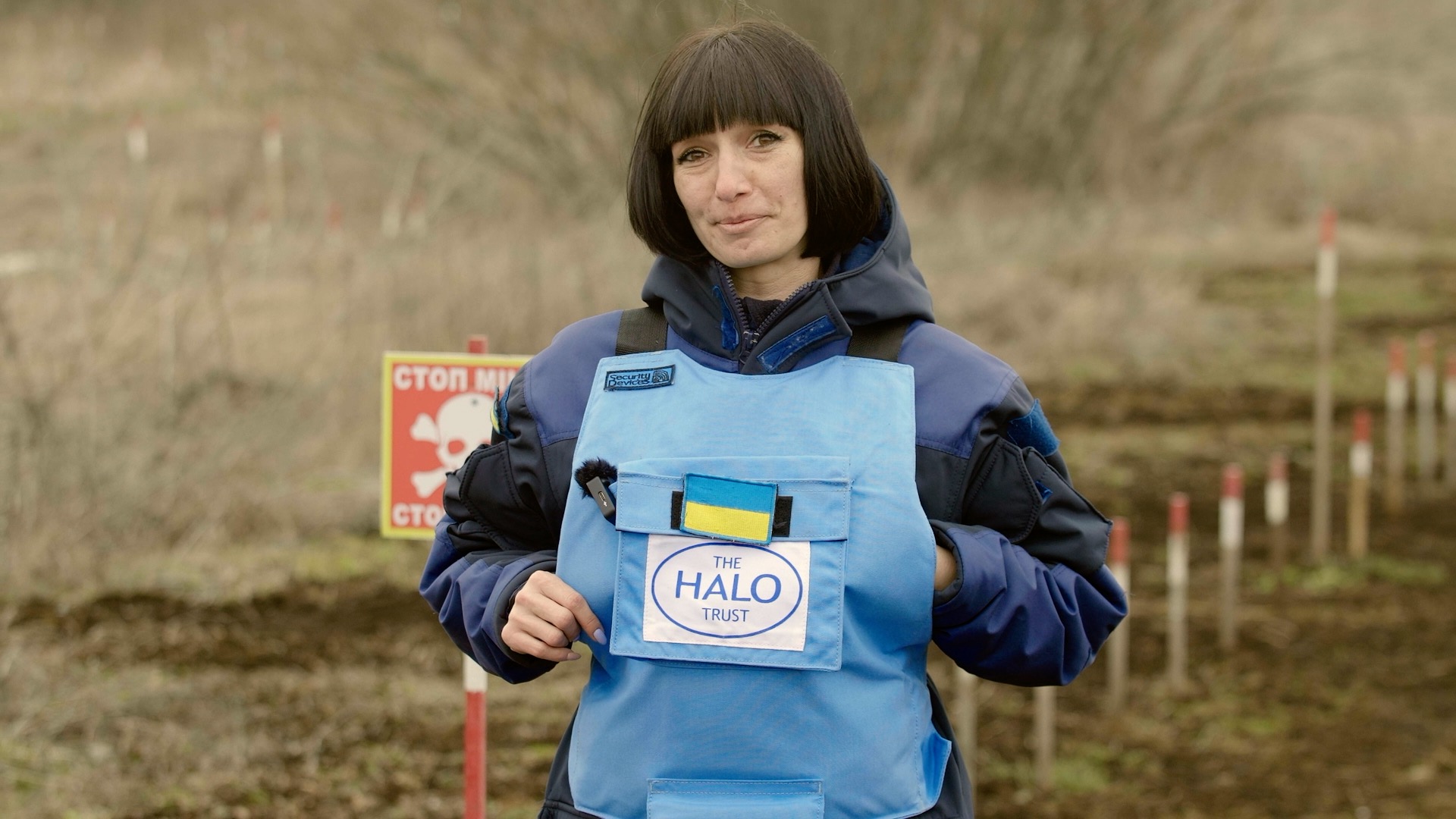
Oleksandra Yevdokimova , Deminer and Team Commander, HALO Trust Brovary, Kyiv Oblast.
Gender and mine action in Lao PDR
Clearing hazardous lands for productive use is essential so that all groups, especially women, are included socially, politically and economically, and can enjoy equal opportunities.
In Lao PDR, Bua rakes the ground to get rid of the weeds growing in and around the cassava she has planted. In the distance, standing by a wooden hut, her husband Lom watches as he feeds a cow from his left hand. What is left of his right hand he keeps hidden.
In 2016, he was cutting wood in the forest when a sudden blast caught him. Lom had been hit by a tennis-ball sized bomb ejected from a cluster munition. This bomb had become buried underground over the previous 50 years.
It originated during the Second Indochina War. Between 1964-1973, an average of one planeload of cluster munitions were dropped on Lao PDR every eight minutes. This included over 270 million sub-munitions from cluster bombs, of which an estimated 80 million unexploded bombs are thought to remain a live threat to this day.
For the last eight years, Lom has relied on Bua to bring in the majority of their income. Three-quarters of survivors from unexploded ordnance between 2011 and 2023 in Lao PDR were boys and men. Women are expected to shoulder the family’s economic burden, including increased healthcare costs, yet are often excluded from consultations and planning on mine action.
To meet the challenge, UNDP has been working with Lao PDR to place gender equality at the core of mine action. UNDP has also developed a gender training manual, a code of conduct and human resource policy to ensure inclusive participation.
Programmes that focus on women’s economic empowerment are also needed. Bua wishes someone could help her to understand how she could lessen her and her husband’s economic burdens. “I am proud to be his wife,” says Bua. “I love him more now than ever. The work might be hard, but I do it willingly.”
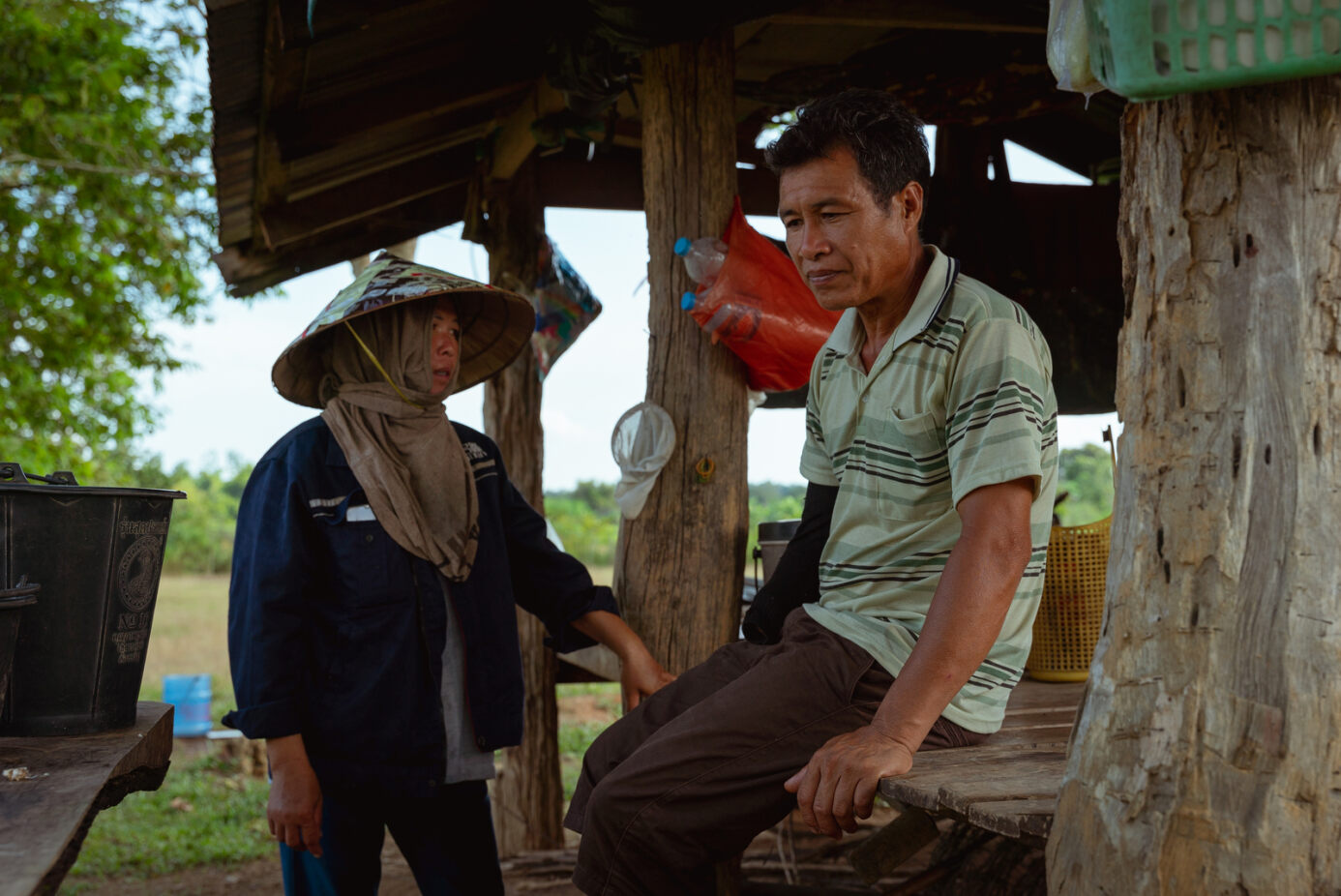
Bua and her husband Lom, who lost his right hand when a cluster munition, which had been buried underground for 50 years, exploded.
International Mine Action Day
Giving a voice to women and providing them with equal opportunities, including that of earning a decent living, may not only positively affect their labour market role, but also shift power relations in households and the wider community.
International Mine Action Day is a reminder that including women has immediate benefits for them and their communities, while making mine action more effective.

 Locations
Locations
